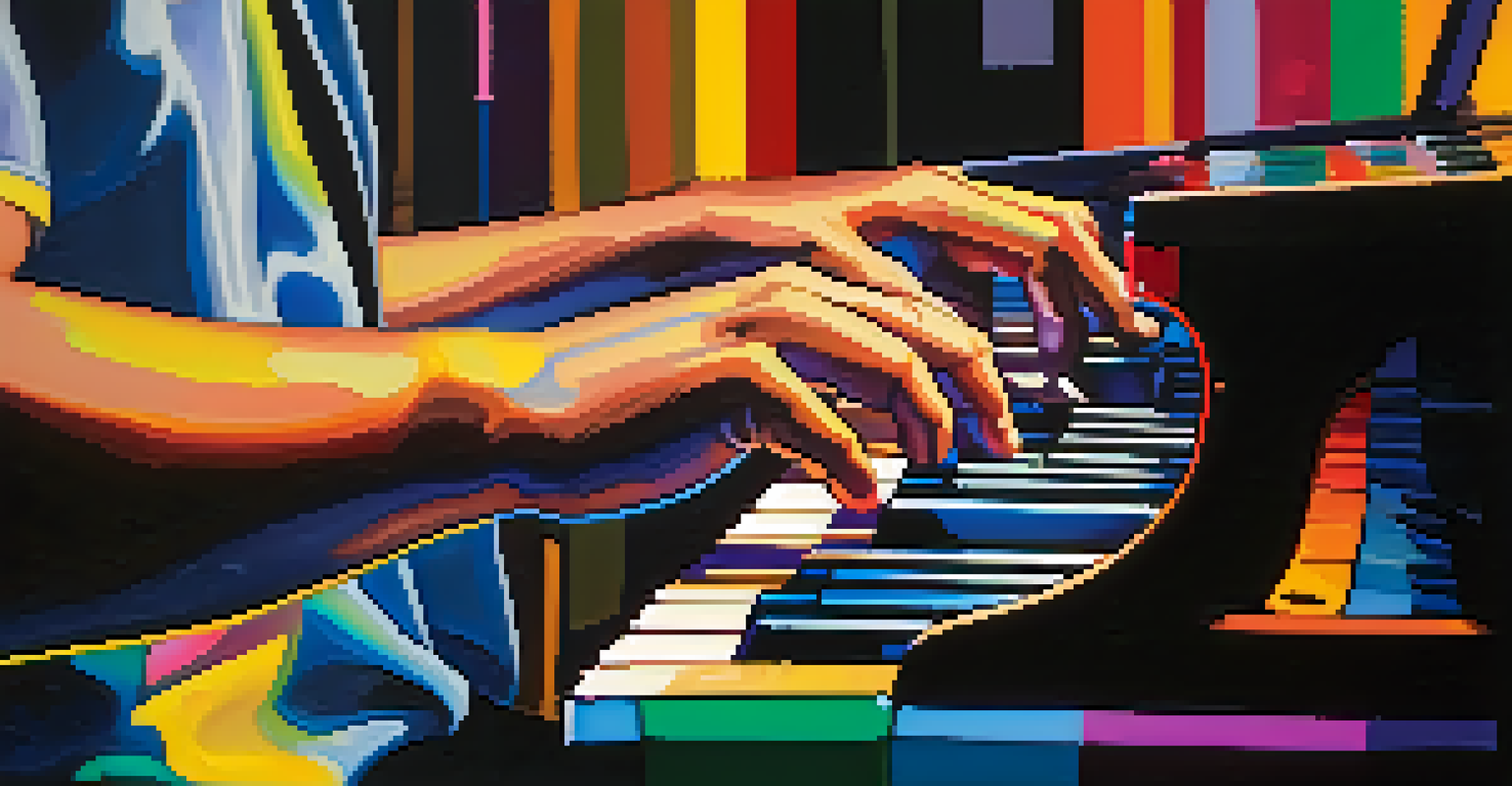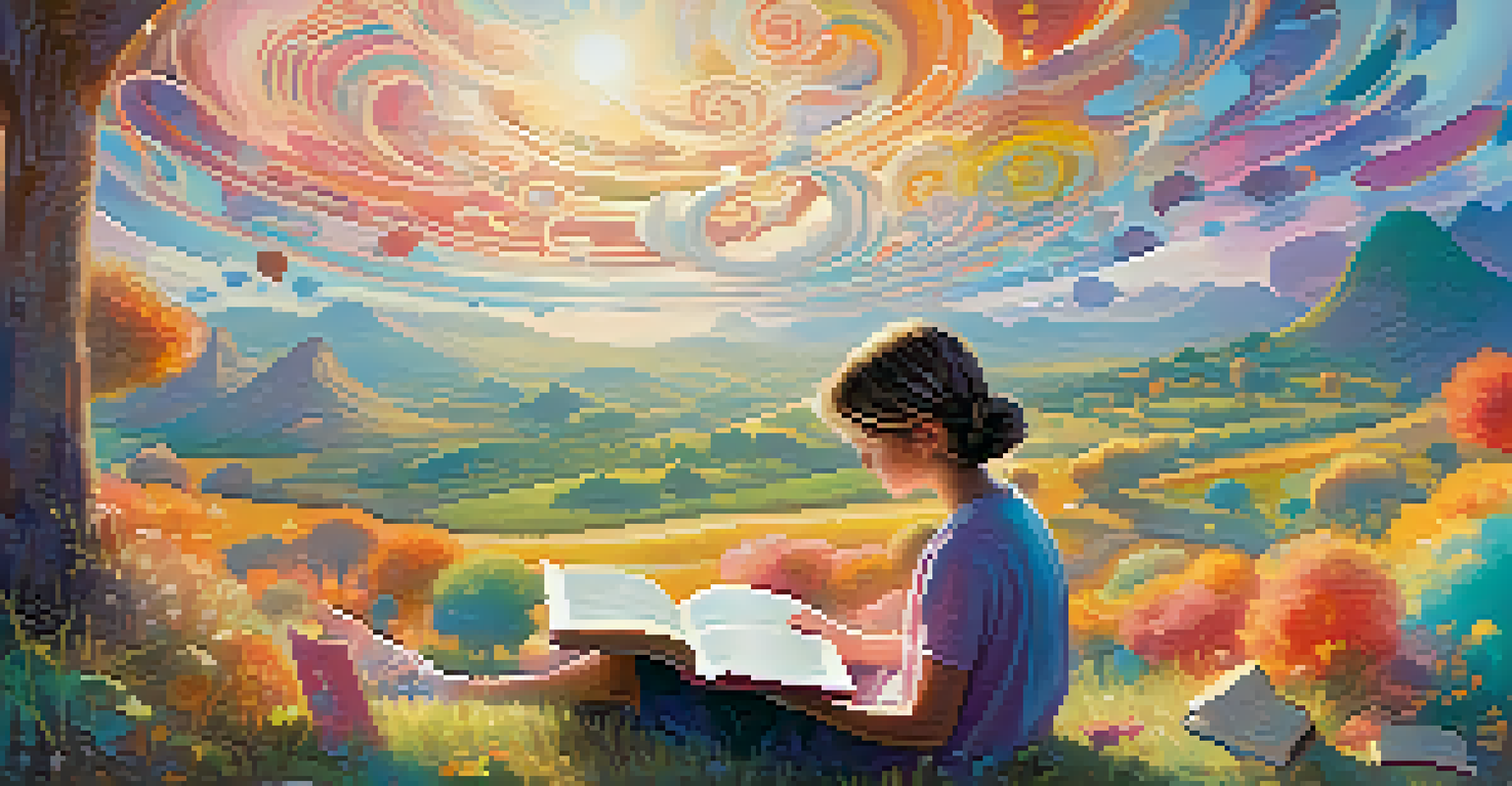Understanding Synesthesia: A Deep Dive into Hallucinogenic Effects

What is Synesthesia? Defining a Unique Sensory Experience
Synesthesia is a fascinating neurological condition where stimulation of one sensory pathway leads to involuntary experiences in another. Imagine tasting colors or hearing shapes; that’s how some synesthetes perceive the world. This blending of senses can create vivid, multi-layered experiences that challenge our typical understanding of perception.
Synesthesia is like having a built-in multisensory experience that most people can only dream of.
The most common form is grapheme-color synesthesia, where individuals associate letters or numbers with specific colors. For example, the letter 'A' might evoke a bright red hue, while 'B' could be seen as blue. This phenomenon can vary widely from person to person, illustrating the unique ways our brains can process information.
Researchers believe that synesthesia may result from increased connectivity between sensory regions in the brain, or it could be an overlap of neural pathways. While it’s not classified as a disorder, it can significantly enhance creativity and memory, offering a remarkable perspective on how we experience reality.
The Science Behind Synesthesia: How It Works
At its core, synesthesia involves the brain's wiring, where areas responsible for different senses become intertwined. This intertwining allows a synesthete to experience sensory stimuli in ways that are both unique and involuntary. For instance, when they hear music, they might also see shapes or colors, creating a rich tapestry of sensory input.

Studies using brain imaging have shown that synesthetes often exhibit greater activity in areas associated with sensory processing. This heightened activity supports the idea that their brains are wired differently, leading to these extraordinary sensory experiences. It’s like having a built-in multisensory experience that most people can only dream of.
Understanding Synesthesia's Nature
Synesthesia is a neurological condition where stimulation of one sense involuntarily triggers experiences in another, creating unique sensory experiences.
Additionally, synesthesia is believed to have a genetic component, as it often runs in families. This suggests that certain neural configurations can be inherited, providing insights into how our sensory perceptions are formed from a young age.
Experiencing Synesthesia: Anecdotes from Synesthetes
Many synesthetes describe their experiences with awe and wonder. For instance, a musician might explain how each note triggers a specific color, enhancing their performance and creativity. This personal connection to sound and color can transform their artistic expression, making it more vibrant and dynamic.
The true art of perception is not in the senses themselves, but in the connections we make between them.
One synesthete shared that when she reads a book, each character has a distinct personality and color associated with them. This makes her reading experience not only immersive but also deeply emotional, as she can visualize the characters in a way that enhances the narrative.
These anecdotes highlight how synesthesia can affect daily life and creativity. For many, it’s not just a condition but a gift that adds depth and richness to their experiences, allowing them to interact with the world in unique ways.
Synesthesia and Creativity: The Artistic Connection
Synesthesia has long been linked to heightened creativity and artistic expression. Famous artists like Wassily Kandinsky and musicians like Duke Ellington were known to have synesthetic experiences that influenced their works. For them, colors and sounds were intertwined, shaping their creative processes and resulting in groundbreaking art.
Many synesthetes find that their unique sensory perceptions enhance their ability to think outside the box. For instance, a visual artist may use their color associations to create pieces that evoke specific emotions or memories, providing a multi-sensory experience for viewers.
Creativity Boost from Synesthesia
Individuals with synesthesia often experience enhanced creativity, as their unique sensory perceptions can inspire innovative artistic expression.
This connection between synesthesia and creativity suggests that experiencing the world in a different way can lead to innovative ideas and artistic breakthroughs. It encourages us to embrace our own unique perceptions and consider how they might influence our creative endeavors.
Hallucinogenic Effects: Synesthesia and Psychedelics
Interestingly, synesthesia shares similarities with the experiences induced by hallucinogenic substances. Both can lead to altered perceptions where senses blend, creating vivid visual and auditory experiences. For instance, psychedelics like LSD or psilocybin can evoke sensations akin to those experienced by synesthetes, leading to a temporary merging of senses.
Research has shown that psychedelics can activate the same brain areas involved in synesthetic experiences, offering insights into the neurological underpinnings of both phenomena. This connection opens up discussions about how altered states of consciousness can enhance our understanding of perception and creativity.
However, while synesthesia is a consistent and involuntary experience, hallucinogenic effects can vary widely and are influenced by numerous factors like dosage and mindset. This distinction is important as it highlights the uniqueness of synesthesia compared to temporary psychedelic experiences.
Navigating Life with Synesthesia: Challenges and Benefits
Living with synesthesia can come with its own set of challenges. While many synesthetes embrace their unique experiences, some may find that sensory overload can occur, particularly in stimulating environments. Bright lights and loud sounds can become overwhelming, leading to the need for coping strategies.
On the other hand, synesthesia can also serve as a powerful tool for memory and learning. Many synesthetes report that their ability to associate colors, shapes, or sounds with information helps them remember things more easily. This can be particularly beneficial in academic and creative pursuits.
Researching Synesthesia's Future
Ongoing research into synesthesia aims to uncover its genetic and neurological underpinnings, which could lead to new insights in psychology and neuroscience.
Ultimately, the journey of navigating life with synesthesia is highly individual. While there are challenges, the benefits often outweigh them, providing a unique perspective on the world that can inspire both personal and artistic growth.
The Future of Synesthesia Research: What Lies Ahead?
As our understanding of synesthesia continues to evolve, researchers are exploring its implications across various fields, including psychology, neuroscience, and art. Future studies aim to unravel the genetic, environmental, and neurological factors contributing to this intriguing condition, potentially leading to new insights about human perception.
Additionally, advancements in technology, such as brain imaging, are providing more detailed views of synesthetic experiences. This could open doors to innovative therapies for individuals with sensory processing disorders, shedding light on how we can improve sensory integration in everyday life.

Ultimately, the future of synesthesia research holds promise not just for understanding this unique phenomenon but also for enhancing our overall appreciation of human creativity and perception. As we continue to learn, we may find even more ways to celebrate the beauty of our diverse sensory experiences.